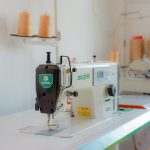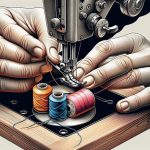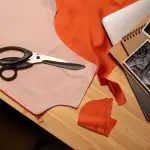Wondering what's the best ball winder for fabrics?
Choosing the right ball winder can make a significant difference in your fabric winding process. With various types available, from manual to electric and compact to industrial-grade options, finding the perfect fit for your needs can be a daunting task.
Understanding the key features to consider and the maintenance required is essential for achieving a smooth and efficient fabric winding experience.
In this guide, we'll explore the different types of ball winders, highlight the best options in each category, and provide maintenance and care tips to help you make an informed decision and master the art of fabric winding.
Key Takeaways
- There are two types of ball winders: manual winders operated by hand and motorized winders powered by electricity.
- When choosing a ball winder, it is important to consider factors such as durability, material, base stability, and ease of maintenance.
- Manual ball winders offer control over the winding process and are portable, while electric ball winders are convenient and efficient for winding large quantities of yarn.
- Compact and portable options are available for crafters on the go, while industrial-grade ball winders are designed for heavy usage and high-volume production.
Types of Ball Winders
What are the different types of ball winders you can use for winding fabrics?
When it comes to ball winders, there are a few different types to consider based on your specific needs. The two main types are manual and motorized ball winders.
Manual winders are operated by hand, making them a good option for those who prefer a hands-on approach or have a smaller budget.
On the other hand, motorized winders are powered by electricity, offering a convenient and efficient winding process.
When choosing a ball winder, it's important to consider compatibility options. Some winders may only be compatible with certain types of yarn or fabrics, so be sure to check the specifications before making a purchase.
Additionally, maintenance tips are crucial to keep your ball winder in good working condition. Regularly cleaning and lubricating the winder will help prolong its lifespan and ensure smooth operation.
Understanding the different types of ball winders and their compatibility options is essential in selecting the right one for your fabric winding needs. By considering these factors and following maintenance tips, you can ensure that your ball winder remains in optimal working condition for years to come.
Key Features to Consider
When considering a ball winder for fabrics, there are several key features to keep in mind.
Firstly, durability and construction are crucial factors to ensure the winder can withstand regular use.
Additionally, speed and efficiency play a significant role in determining the convenience of winding yarn.
Durability and Construction
When choosing a ball winder for fabrics, durability and construction are key factors to consider. You want a tool that will withstand frequent use and maintain its quality over time. Here are some important features to consider:
- Material: Look for a ball winder made of durable materials such as metal or high-quality plastic.
- Sturdy Base: A stable and well-constructed base is essential for smooth winding without wobbling or tipping over.
- Smooth Mechanism: Opt for a winder with a smooth and sturdy winding mechanism to ensure consistent performance.
- Easy Maintenance: Consider winders that are easy to clean and maintain for long-term use.
- Quality Construction: Choose a ball winder with solid construction and attention to detail for reliable and efficient fabric winding.
Speed and Efficiency
You'll consistently appreciate the efficiency of a ball winder that operates smoothly and swiftly, allowing you to wind fabrics with ease and speed.
When considering speed and efficiency, it's essential to look at the winding techniques employed by different ball winders. Some winders offer time-saving tips such as the ability to wind yarn or fabric more quickly without sacrificing quality.
Additionally, it's worth comparing hand-cranking options with motorized ones. Hand-cranking may provide a more hands-on experience, but motorized options can significantly reduce the time and effort required to wind fabrics, making them a favorable choice for those seeking maximum efficiency.
Compatibility With Yarn
Consider the compatibility of the yarn with the ball winder's key features to ensure smooth and efficient fabric winding. Not all yarn is created equal, and the best ball winder for fabrics should be compatible with various yarn types. Here are the key features to consider for yarn compatibility:
- Yarn Weight: Ensure that the ball winder can handle the weight of the yarn you typically work with.
- Yarn Texture: Check if the ball winder can accommodate different yarn textures such as delicate fibers or bulky yarns.
- Yarn Length: Look for a ball winder that can handle long strands of yarn without tangling or jamming.
- Yarn Tension Control: Consider a ball winder with adjustable tension settings to accommodate different fabric winding techniques.
- Yarn Thickness: Ensure the ball winder can handle the thickness of the yarn you commonly use for your fabric projects.
Best Manual Ball Winders
Looking to wind yarn manually? Check out these top-rated manual ball winders for a convenient and efficient winding experience.
When it comes to manual ball winders, there are a few key factors to consider. Hand-cranked winders are a popular choice for those who prefer a more hands-on approach to winding yarn. They offer control over the winding process and are often portable, making them ideal for knitters and crocheters on the go. However, they do require manual effort, so it's important to consider how much winding you plan to do at once.
Another important consideration is the material of the winder. Wooden winders are often favored for their durability and classic look, while plastic winders are lightweight and typically more affordable. When choosing between wooden and plastic winders, it's essential to weigh the advantages of each material based on your specific needs.
Here's a comparison of some popular manual ball winders:
| Manual Ball Winder | Material | Pros | Cons |
|---|---|---|---|
| Stanwood Needlecraft | Wooden | Durable, classic look | Heavier, higher cost |
| Lacis Jumbo Yarn Winder | Plastic | Lightweight, affordable | Less durable, less aesthetic |
| Nancy's Knit Knacks Heavy Duty Ball Winder | Wooden | Sturdy, suitable for heavy use | Expensive, bulky |
| KnitPicks Yarn Ball Winder | Plastic | Portable, budget-friendly | Less durable, may require gentle handling |
Consider your specific winding needs and preferences to choose the best manual ball winder for your projects.
Top Electric Ball Winders
Explore electric ball winders for a convenient and efficient winding experience. When it comes to winding yarn or fabrics, electric ball winders offer a time-saving and hassle-free solution compared to manual options. Here are some top electric ball winders to consider:
- Stanwood Needlecraft Large Metal Ball Winder: This electric winder is known for its sturdy build and ability to wind large skeins of yarn quickly and efficiently.
- Knit Picks Yarn Ball Winder: Compact and versatile, this electric ball winder is a great space-saving option for those with limited crafting space.
- Chiaogoo Amish-Style Wooden Yarn Swift and Mega Ball Winder: This electric winder pairs perfectly with a yarn swift and offers a smooth winding experience for various types of yarn.
- Nancy's Knit Knacks Heavy Duty Ball Winder: With its powerful motor, this electric ball winder can handle heavy-duty winding tasks with ease.
- Lacis Jumbo Yarn Ball Winder: Ideal for larger projects, this electric winder can swiftly wind up substantial quantities of yarn, saving you time and effort.
Electric ball winders not only save time but also come in space-saving options, making them a convenient choice for avid crafters.
Compact and Portable Options
You can find compact and portable options for ball winders that are ideal for crafters with limited space or those who need to take their winding on the go. Space-saving designs are perfect for small crafting areas or for those who want to keep their tools neatly stored when not in use. Look for ball winders that are specifically designed to be compact, with a smaller footprint that won't take up too much space on your crafting table or storage area. Some options even come with clamps or suction cups, allowing you to secure the winder to a table or countertop for stability while in use, and then easily remove it for storage.
In addition to space-saving designs, there are travel-friendly options available for crafters who need to take their winding projects on the go. These portable ball winders are lightweight and designed to be easily packed for crafting retreats, workshops, or simply for crafting on the move. Look for features such as collapsible or removable handles, compact dimensions, and durable construction that can withstand travel. Whether you're working in a small space or bringing your crafting with you, these compact and portable ball winders provide convenient solutions for all your winding needs.
Industrial-Grade Ball Winders
For heavy-duty fabric winding needs, consider investing in an industrial-grade ball winder that provides high efficiency and durability. Industrial-grade ball winders are designed to meet the demands of commercial applications and offer heavy-duty winding capabilities.
Here are some key features to consider:
- High Speed and Efficiency: Industrial-grade ball winders are equipped to handle high volumes of fabric, winding quickly and efficiently to keep up with the demands of commercial settings.
- Durable Construction: These ball winders are built to withstand heavy usage and are often constructed with robust materials, ensuring longevity and reliability in industrial environments.
- Variable Tension Control: Many industrial-grade ball winders offer adjustable tension control, allowing for customization based on the specific fabric being wound.
- Large Capacity: With the ability to handle larger quantities of fabric, industrial-grade ball winders are suitable for high-volume production needs.
- Versatility: These ball winders can accommodate a wide range of fabric types and weights, making them a versatile and practical choice for various industrial applications.
When considering an industrial-grade ball winder, prioritize features that align with your specific commercial fabric winding requirements.
Budget-Friendly Choices
Looking for a budget-friendly option for winding your fabrics?
You'll find that there are cost-effective winding options available that won't break the bank.
From affordable fabric ballers to budget-friendly yarn winders, you'll have plenty of choices to help you find the best ball winder for your needs without overspending.
Cost-Effective Winding Options
Seeking a cost-effective ball winder for fabrics? Here are some budget-friendly choices that can help you efficiently wind your yarn or fabric without breaking the bank:
- Handheld Yarn Winders: These compact and affordable winders are perfect for small-scale projects and are easy to use.
- Umbrella Swift with Yarn Winder: This cost-effective combination allows for swift winding and can handle larger quantities of yarn or fabric.
- Manual Tabletop Yarn Winders: These economical winders are great for personal use and offer a good balance between price and functionality.
- DIY PVC Ball Winders: For the budget-conscious, constructing your own winder using PVC pipes can be a fun and inexpensive option.
- Simple Hand-Crank Winding Machines: Affordable and straightforward, these machines provide an efficient winding technique for larger quantities of fabric or yarn.
Affordable Fabric Ballers
When choosing a budget-friendly fabric ball winder, consider the Handheld Yarn Winders for their compact design and affordability. These nifty tools are perfect for those seeking affordable options.
The Handheld Yarn Winders aren't only cost-effective but also offer the convenience of DIY solutions. They're designed to efficiently wind fabrics into neat, compact balls, saving you both time and effort. Their affordability makes them a great choice for beginners or those on a budget.
Another option to consider is the tabletop fabric ball winder, which also offers a budget-friendly solution for your fabric winding needs.
Budget-Friendly Yarn Winders
Wondering how you can wind yarn on a budget? Look no further! There are budget-friendly yarn winders available that can help you achieve your crafting goals without breaking the bank.
When considering a budget-friendly yarn winder, here are some key factors to keep in mind:
- Yarn tension: Opt for a winder that allows you to adjust the tension to suit different types of yarn, ensuring smooth and consistent winding.
- Winding capacity: Consider the amount of yarn the winder can accommodate to meet your project needs without frequent refills.
- Durability: Look for a winder made of sturdy materials to ensure it can withstand regular use.
- Portability: A compact and lightweight winder can be convenient for storage and crafting on the go.
- Ease of use: Choose a winder with user-friendly features for a hassle-free winding experience.
Maintenance and Care Tips
To maintain and care for your ball winder, regularly oil the moving parts according to the manufacturer's guidelines. Proper maintenance ensures that your ball winder operates smoothly and lasts longer. In addition to regular oiling, here are some maintenance and care tips to keep your ball winder in top condition:
| Maintenance Tips | Troubleshooting Techniques | Additional Care |
|---|---|---|
| Clean the winder after each use | If the winder is making unusual noises, check for any loose screws or parts | Store the winder in a dry place |
| Check for any signs of wear and tear | Ensure the yarn is properly aligned to prevent tangles | Avoid exposing the winder to direct sunlight |
| Inspect the yarn guide for any debris or buildup | If the yarn gets stuck, gently unwind it and check for any obstructions | Keep the winder covered when not in use |
| Tighten any loose screws or bolts | If the handle becomes difficult to turn, apply a small amount of lubricant | Avoid overloading the winder beyond its capacity |
| Keep the winder on a stable surface | If the yarn cakes are not forming properly, adjust the tension or alignment | Follow the manufacturer's guidelines for specific care instructions |
Frequently Asked Questions
Can a Ball Winder Be Used for Winding Yarn as Well as Fabric?
Yes, a ball winder can be used for winding both yarn and fabric. It's a versatile tool for yarn winding and fabric organization. Not only does it make winding yarn easier, but it also helps with fabric storage and organization.
Are There Any Safety Precautions to Keep in Mind When Using an Electric Ball Winder?
When using an electric ball winder, it's important to follow safety precautions like keeping hands clear of moving parts. Ensure the winder is suitable for fabric and yarn winding, and for winding large quantities without compromising safety. Regular industrial grade maintenance is crucial for specific fabrics suitability.
Can a Compact and Portable Ball Winder Handle Large Quantities of Fabric?
Yes, a compact and portable ball winder can handle large quantities of fabric, but there are limitations to the amount it can wind at once. It's designed for yarn winding but can handle fabric in smaller amounts.
What Kind of Maintenance Is Required for an Industrial-Grade Ball Winder?
To keep an industrial-grade ball winder running smoothly, routine maintenance is key. Regularly clean and lubricate moving parts, inspect for wear or damage, and follow manufacturer's guidelines. Troubleshooting tips can help address any issues promptly.
Are There Any Specific Fabrics That Are Not Suitable for Winding With a Ball Winder?
Some fabrics, like delicate lace or loosely woven knits, may not be suitable for winding with a ball winder as they can snag or stretch. Always consider fabric care and suitability when using a ball winder.
- How Does Ring Spun Cotton Affect Garment Fit and Shape Retention? - August 13, 2024
- What Are the Challenges in Producing Ring Spun Cotton? - August 13, 2024
- Is Ring Spun Cotton Suitable for Plus-Size Clothing? - August 13, 2024







